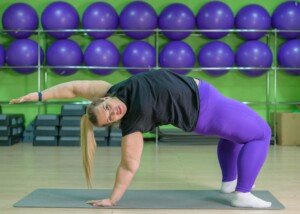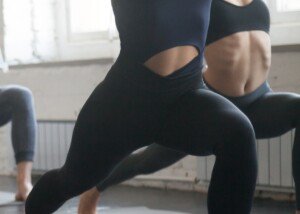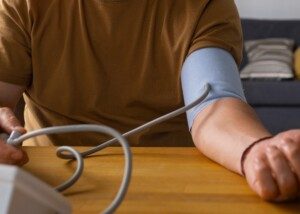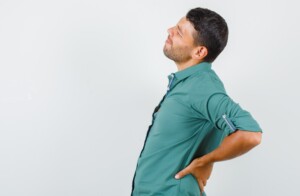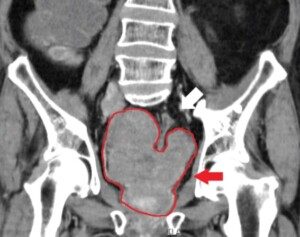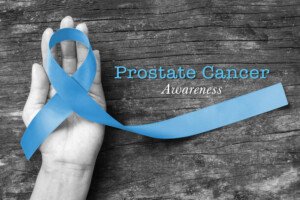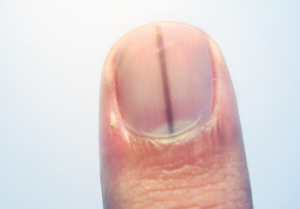Which is more effective for lowering high blood pressure: yoga or stretching? Yoga and “stretching” are not the same thing.
A person who regularly stretches may believe they’re already doing yoga. But this isn’t necessarily true.
This is why someone who has faithfully been doing stretching exercises may be quite humbled after completing their very first yoga class.
So how might yoga, when compared to popular stretching exercises, affect blood pressure?
A pilot study published in the Canadian Journal of Cardiology (2025) explored the effects of adding yoga to a regular exercise regimen for those with hypertension (high blood pressure).
Conducted over three months, the study aimed to examine whether yoga could reduce cardiovascular risks in this group.
In this study, researchers focused on yoga’s potential to reduce cardiovascular risk.
While beginner-level yoga and conventional stretching exercises share some similarities (but not enough to consider these two forms of movement as one and the same), they differ significantly in their effects on the body, which prompted the need for this study.
How the Study Was Done
Led by Dr. Paul Poirier of Laval University in Quebec, the study recruited 60 individuals with hypertension and metabolic syndrome to participate in an exercise program.
Participants were divided into two groups.
- Group 1 did 15 minutes of structured yoga.
- Group 2 performed 15 minutes of stretching (no yoga).
- Both groups also did 30 minutes of aerobic exercise.
- All exercise was done five times a week.
Over the course of the study, various health markers were measured, including blood pressure, heart rate, blood lipids (fats), glucose levels, and Framingham and Reynolds cardiovascular risk scores.
At the beginning of the study, there were no significant differences between the two groups in terms of age, gender, BMI, blood pressure or resting heart rate.
After three months, both groups showed improvements in blood pressure, heart rate and other cardiovascular markers.
But did the yoga group have a greater degree of improvement than did the stretching group?
For blood pressure, the yoga group had a 10 mmHg reduction in systolic (the top number) blood pressure, compared to a 4 mmHg reduction in the stretching group.
Additionally, the yoga group experienced a decrease in resting heart rate and a reduction in their 10-year cardiovascular risk.
Why was yoga more effective than stretching?
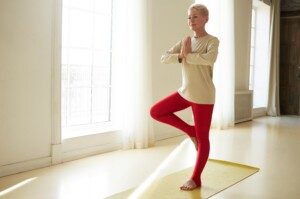
Freepik.com/shurkin_son
While it’s not yet clear exactly how yoga achieves these positive effects, the study’s findings indicate that its benefits extend beyond simply stretching.
This would be obvious to anyone who’s never taken a yoga class.
Yoga is not a glorified form of stretching, even though it involves stretching.
People who are new to stretching may spend 45 minutes doing various stretching exercises, without feeling worked over, tired out or “out of shape.”
If these same people were to take a 45 minute yoga class, they’d definitely feel their body working hard through all the flows.
They’ll have increased respiration, may break a sweat and, at the conclusion, will feel they got a workout and will be humbled at how non-efficient they may even have been with the flows.
This assumes that the class was a typical yoga class that might be offered at a gym.
So it shouldn’t be surprising that yoga beats out stretching for improvement in blood pressure readings.
This finding suggests that yoga could be considered a replacement for hypertension drugs, part of an overall management strategy for controlling blood pressure.
How to Get Started with Yoga
Yoga is a practice, not a perfection contest.
Take your time and don’t expect immediate flexibility or strength.
Choose the Right Style: Some styles of yoga are gentler and slower-paced.
Consider starting with styles like Hatha, Yin or Restorative, which focus on slower movement and holding poses for longer periods.
Find a Supportive Class: Look for classes that are inclusive.
Many yoga teachers are trained to modify poses for different body types and skill levels.
Online platforms and in-person studios may have classes specifically designed for beginners or even autistic participants.
Use Props: Blocks and pushup handles are examples that can help those with limited range of motion, poor core strength or a painful wrist from a ganglion cyst.
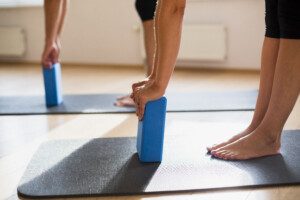
Freepik.com
Modify Poses to Suit Your Body: Yoga poses can be modified.
For instance, bending your legs is a form of modification to make a challenging pose doable.
You don’t have to “go down all the way” or bend your back like a gymnast to take a yoga class.
If a flow is too fast, you can modify each pose so that the series of movements doesn’t feel too strenuous.
You Don’t Have to Be Barefoot. If being barefoot isn’t your style, then you can wear booties, socks or even sneakers.
If the instructor insists that you go barefoot (which I’d find hard to believe), then you should find another class.
Practice at Home: If you’re nervous about joining a class, start practicing at home with online videos or yoga apps.
Be Consistent: Try to incorporate yoga into your weekly routine.
Yoga, like any form of exercise, requires consistency to be effective.
You’ll get all the benefits even if you do yoga once a week.
Yoga or stretching to lower high blood pressure?
This study shows that yoga wins. But it didn’t investigate the minimal days per week of yoga needed for blood pressure management.
So if you can get in yoga only once a week, don’t let that discourage you.
Do it once a week if that’s all you can do for whatever reason. The key is consistency; don’t skip weeks.


